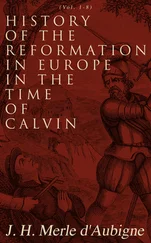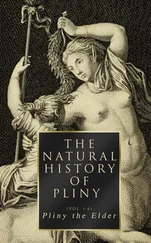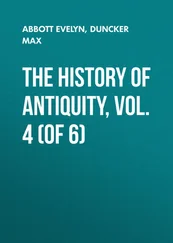Evelyn Abbott - The History of Antiquity, Vol. 3 (of 6)
Здесь есть возможность читать онлайн «Evelyn Abbott - The History of Antiquity, Vol. 3 (of 6)» — ознакомительный отрывок электронной книги совершенно бесплатно, а после прочтения отрывка купить полную версию. В некоторых случаях можно слушать аудио, скачать через торрент в формате fb2 и присутствует краткое содержание. Жанр: foreign_antique, foreign_prose, Историческая проза, на английском языке. Описание произведения, (предисловие) а так же отзывы посетителей доступны на портале библиотеки ЛибКат.
- Название:The History of Antiquity, Vol. 3 (of 6)
- Автор:
- Жанр:
- Год:неизвестен
- ISBN:нет данных
- Рейтинг книги:5 / 5. Голосов: 1
-
Избранное:Добавить в избранное
- Отзывы:
-
Ваша оценка:
- 100
- 1
- 2
- 3
- 4
- 5
The History of Antiquity, Vol. 3 (of 6): краткое содержание, описание и аннотация
Предлагаем к чтению аннотацию, описание, краткое содержание или предисловие (зависит от того, что написал сам автор книги «The History of Antiquity, Vol. 3 (of 6)»). Если вы не нашли необходимую информацию о книге — напишите в комментариях, мы постараемся отыскать её.
The History of Antiquity, Vol. 3 (of 6) — читать онлайн ознакомительный отрывок
Ниже представлен текст книги, разбитый по страницам. Система сохранения места последней прочитанной страницы, позволяет с удобством читать онлайн бесплатно книгу «The History of Antiquity, Vol. 3 (of 6)», без необходимости каждый раз заново искать на чём Вы остановились. Поставьте закладку, и сможете в любой момент перейти на страницу, на которой закончили чтение.
Интервал:
Закладка:
It ends in Brugsch, loc. cit. II. 198, with Ramses XVI.
130
II. 229, note .
131
II. 155.
132
Maspero reads Psiuncha; Brugsch, Pisebkhan.
133
In the unpublished inscription of Abydus in Brugsch, "Hist. of Egypt," II. p. 199.
134
Brugsch, loc. cit. II. p. 204.
135
According to Brugsch, Rakamat, or Karamat, was not the wife of Osorkon, but of Ssheshonk, loc. cit. , p. 204.
136
To make Pithut, Ssheshonk, Nemrut, and Ssheshonk II., as well as Panrechnes or Pallash-Nisu, kings of Assyria, and place a conquest of Egypt by Assyria at the end of the twenty-first dynasty (Brugsch, "Hist. of Egypt," II. p. 198), because Nemrut or Nemaroth is called on the stone of Abydus " Ser a mat ," and "prince of princes," appears to me absolutely impossible. How could one of the kings of Asshur, who, in the service of Asshur, Samas, and Bin, overthrew the nations, allow himself to be buried near Osiris of Abydus? – how could his son perform Egyptian funeral rites for him there? The Books of the Hebrews must have preserved some knowledge of a conquest of Egypt in the time of David and Solomon, in the first half of the tenth century – how could the armies of Assyria have come to Egypt except through Syria? Tiglath Pilesar I., about 1100 B.C., touched northern Syria merely in passing; not till the ninth century did Assurnasirpal again come as far as Mount Amanus and the coast of the Phenicians, and Shalmanesar as far as Damascus. A hundred years later Tiglath Pilesar II. first planted a firm foot in Syria. The Semitic (?) character of the names of the princes of the twenty-second dynasty, who are also distinguished as eager worshippers of the gods of Egypt, as well as the Semitic nationality of the six or eight servants, who, according to the stone of Abydus, were allotted to the plots of ground for the funeral service of Nemaroth at Abydus, are sufficiently explained by what we know of the mingling of the population in the Western Delta, and of other Semitic influence in Egypt.
137
It ought perhaps to be observed that Shishak (1 Kings xi. 40), is not called Pharaoh, but Melek Mizraim.
138
Brugsch, "Hist. d'Egypte," p. 227.
139
Brugsch, "Hist. d'Egypte," p. 222.
140
Others read Shuput.
141
Brugsch, "Hist. of Egypt," II. 212.
142
According to Manetho's list, Sesonchis reigned 21 years.
143
Brugsch, loc. cit. II. p. 198.
144
Sera en mashush.
145
Chabas, "Mélanges," Ser. 2, pp. 73-107.
146
Lepsius, "Abh. Berl. Akad. Phil. Hist. Klasse," 1856, s. 264. Mariette, "Bull. Archéolog. Athen. Franc." 1855, pp. 93, 98-100.
147
Cp. Von Gutschmid, "Beiträge zur Geschichte des alten Orients," s. 104, seqq.
148
Diod. 1, 45.
149
Plut. "de Isid." c. 8; cf. Athenæus, p. 418.
150
Joseph. "c. Apionem," 2, 2, 6.
151
Mariette, "Revue Archéolog." 1865, 12, 178.
152
Pianchi is also called the son of the high priest Herhor (p. 51). But this coincidence does not compel us to explain the kings of Napata as descendants of that Herhor who lived 400 years before Pianchi of Napata.
153
De Rougé, "Mémoire sur une inscript. de Piankhi;" Brugsch, "Hist. of Egypt," I. 129; II. 243, 247.
154
I have shown above that Petubastis came to the throne about the year 775 B.C., and Bocchoris, the son of Tnephachtus, about 753 B.C.; Tnephachtus, therefore, must be placed in the time between 770-753 B.C. Thus the time of the campaign of Pianchi is fixed. To throw back the campaign nearly 100 years is not possible, owing to the mention of Osorkon, the names of Nemrut, Ssheshonk, Petise, which belong to the house of the Bubastites, and the date of Tnephachtus. If the lists of Assurbanipal mention a Ssheshonk of Busiris, a Tafnecht – not of Sais, but of Buni or Bunubu; a Pefabast, not of Chnensu but of Zoan – the reappearance of these names can be explained by the fact that these dynastic families have also been preserved among the Ethiopians (p. 72).
155
Athenæus, p. 418; Diod. 1, 74.
156
Diod. 1, 94.
157
Diod. 1, 79.
158
Plut. "Demetr." c. 27.
159
Ælian. "Hist. An." 12, 3.
160
Diod. 1, 94.
161
Mariette, "Bab. Athen. Franc." p. 58-62.
162
Ælian. "Hist. An." 11, 11.
163
Ælian. loc. cit. 12, 3.
164
De Rougé, "Mélanges d'Archéol." 1, 37, concludes from the monuments of Tirhaka and the statue of Ameniritis, that Kashta succeeded Pianchi, that Sabakon and the others are children of Kashta (?) According to Brugsch the – ka in Shabaka and Shabataka is the attached article of the Barabra language. Hence it is explained how Saba(ka) can become Seveh among the Hebrews, or Sabhi among the Assyrians. Cf. Oppert. "Mémoire sur les rapports de l'Egypte et de l'Assyrie," p. 12-14.
165
Herod. 2, 137-141.
166
Diod. 1, 45, 65.
167
I have already been able to fix the end of the Ramessids, the date of the Tanites and Bubastites, by the date of the accession of Shishak in the Hebrew reckoning; the length of the dynasty of the Tanites in Manetho; and the length of the Bubastites as corrected by the monuments, and the synchronism of the first Olympiad for Petubastis. For the period from the end of the Bubastites to the accession of Sabakon, the important points are the seventh Olympiad for Bocchoris, and the sarcophagus of the Apis of Bokenranef. If Bocchoris came to the throne in the year 753 B.C., Ssheshonk IV. died in the year 780 B.C.; if this was the thirty-seventh or thirty-eighth of his reign, the successor of the Apis buried in the thirty-seventh year of Ssheshonk might certainly live to the year 748, the sixth year of Bocchoris according to my reckoning. It is decisive for Sabakon's accession in Egypt that Hoshea of Israel undoubtedly ascended the throne in 734 B.C. (p. 16, note; 48). Shalmanesar IV. of Assyria marched against Israel in the year 726 B.C., when he had discovered the conspiracy of Hoshea with Seveh (Sabakon, p. 69). Hoshea must, therefore, have negotiated with Seveh in 727 B.C. at the latest, and probably earlier. Sabakon must have been previously established on the throne of Egypt. He cannot, therefore, have conquered Egypt later than 730 B.C. Bocchoris therefore reigned 23 years (753-730 B.C.); the time which Manetho allots to Bocchoris, six years, is too short for the completion of his legislation and the attainment of that fame as a legislator which he left behind him, according to the account of the Greeks. That Tirhaka reigned over Meroe and Egypt in the year 702 at the latest, is proved by the battle of Eltekeh, which was fought in 701 B.C. (p. 125). If Seveh, who negotiated with Hoshea, is supposed to be Sabataka, the conquest of Egypt by Sabakon must be put in the year 739. The Apis discovered in the twenty-sixth year of Tirhaka and buried in the twentieth year of Psammetichus, shows that according to the chronology of that period, Psammetichus was regarded as the immediate successor of Tirhaka. According to the reign of 54 years allotted to him by Herodotus and Manetho, Psammetichus begins in 664 B.C., since his death is fixed with certainty in 610 B.C. If Tirhaka's reign over Egypt began in the year 703 B.C., the year 678 would be the twenty-sixth of his reign; the Apis lived down to the twentieth year of the reign of Psammetichus, i. e. down to the year 645 B.C. – consequently 30 years, an age (the number on the inscription is illegible), which even a less carefully tended bull might attain. Tirhaka reigned from 703 to 664 B.C., i. e. 39 years. If the lists of Manetho, according to our excerpts, allow him only 18 years (Syncellus gives 20), this is obviously due to the fact that the reigns of Stephinates, Nechepsus, and Necho, who ought to stand side by side with Tirhaka, with seven, six, and eight years, i. e. with 21 years in all, are deducted from the reign of Tirhaka, in order to place these three princes after him. To the predecessors of Tirhaka, Sabakon and Sebichus, Manetho allows eight and fourteen years. The monuments of Egypt show that Sabakon reigned at least 12 years; Sabakon must, therefore, according to these dates, have begun to reign in Egypt not later than 729 B.C. (664 + 39 + 26). The Assyrian monuments show that Sabakon fought with Sargon at Raphia in the year 720 B.C., and his successor negotiated with him; that Tirhaka fought with Sennacherib in Syria in 701 B.C., and that he was at war with Assurbanipal about the year 666 B.C.
Читать дальшеИнтервал:
Закладка:
Похожие книги на «The History of Antiquity, Vol. 3 (of 6)»
Представляем Вашему вниманию похожие книги на «The History of Antiquity, Vol. 3 (of 6)» списком для выбора. Мы отобрали схожую по названию и смыслу литературу в надежде предоставить читателям больше вариантов отыскать новые, интересные, ещё непрочитанные произведения.
Обсуждение, отзывы о книге «The History of Antiquity, Vol. 3 (of 6)» и просто собственные мнения читателей. Оставьте ваши комментарии, напишите, что Вы думаете о произведении, его смысле или главных героях. Укажите что конкретно понравилось, а что нет, и почему Вы так считаете.












